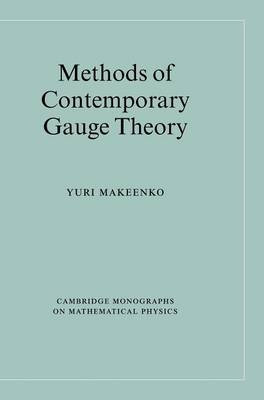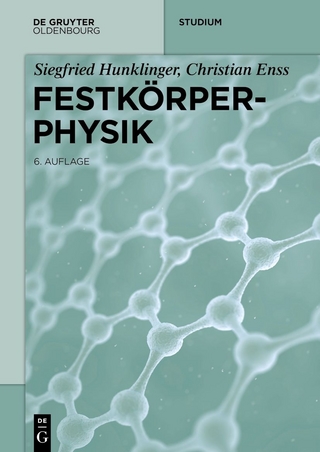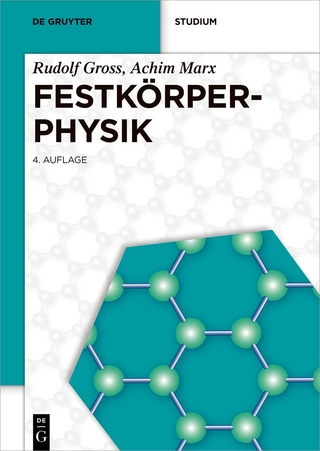
Methods of Contemporary Gauge Theory
Seiten
2002
Cambridge University Press (Verlag)
978-0-521-80911-5 (ISBN)
Cambridge University Press (Verlag)
978-0-521-80911-5 (ISBN)
- Titel erscheint in neuer Auflage
- Artikel merken
This 2002 book provides a thorough introduction to quantum theory of gauge fields, with emphasis on non-perturbative methods. Suitable as a textbook for advanced graduate courses in quantum field theory, it will also be of interest to researchers in high energy theory and condensed matter physics.
This 2002 book introduces the quantum theory of gauge fields. Emphasis is placed on four non-perturbative methods: path integrals, lattice gauge theories, the 1/N expansion, and reduced matrix models, all of which have important contemporary applications. Written as a textbook, it assumes a knowledge of quantum mechanics and elements of perturbation theory, while many relevant concepts are pedagogically introduced at a basic level in the first half of the book. The second half comprehensively covers large-N Yang-Mills theory. The book uses an approach to gauge theories based on path-dependent phase factors known as the Wilson loops, and contains problems with detailed solutions to aid understanding. Suitable for advanced graduate courses in quantum field theory, the book will also be of interest to researchers in high energy theory and condensed matter physics as a survey of recent developments in gauge theory.
This 2002 book introduces the quantum theory of gauge fields. Emphasis is placed on four non-perturbative methods: path integrals, lattice gauge theories, the 1/N expansion, and reduced matrix models, all of which have important contemporary applications. Written as a textbook, it assumes a knowledge of quantum mechanics and elements of perturbation theory, while many relevant concepts are pedagogically introduced at a basic level in the first half of the book. The second half comprehensively covers large-N Yang-Mills theory. The book uses an approach to gauge theories based on path-dependent phase factors known as the Wilson loops, and contains problems with detailed solutions to aid understanding. Suitable for advanced graduate courses in quantum field theory, the book will also be of interest to researchers in high energy theory and condensed matter physics as a survey of recent developments in gauge theory.
Preface; Part I. Path Integrals: 1. Operator calculus; 2. Second quantization; 3. Quantum anomalies from path integral; 4. Instantons in quantum mechanics; Part II. Lattice Gauge Theories: 5. Observables in gauge theories; 6. Gauge fields on a lattice; 7. Lattice methods; 8. Fermions on a lattice; 9. Finite temperatures; Part III. 1/N Expansion: 10. O(N) vector models; 11. Multicolor QCD; 12. QCD in loop space; 13. Matrix models; Part IV. Reduced Models: 14. Eguchi–Kawai model; 15. Twisted reduced models; 16. Non-commutative gauge theories.
| Erscheint lt. Verlag | 15.8.2002 |
|---|---|
| Reihe/Serie | Cambridge Monographs on Mathematical Physics |
| Zusatzinfo | Worked examples or Exercises |
| Verlagsort | Cambridge |
| Sprache | englisch |
| Maße | 182 x 255 mm |
| Gewicht | 904 g |
| Themenwelt | Naturwissenschaften ► Physik / Astronomie ► Festkörperphysik |
| Naturwissenschaften ► Physik / Astronomie ► Hochenergiephysik / Teilchenphysik | |
| Naturwissenschaften ► Physik / Astronomie ► Quantenphysik | |
| ISBN-10 | 0-521-80911-8 / 0521809118 |
| ISBN-13 | 978-0-521-80911-5 / 9780521809115 |
| Zustand | Neuware |
| Haben Sie eine Frage zum Produkt? |
Mehr entdecken
aus dem Bereich
aus dem Bereich


